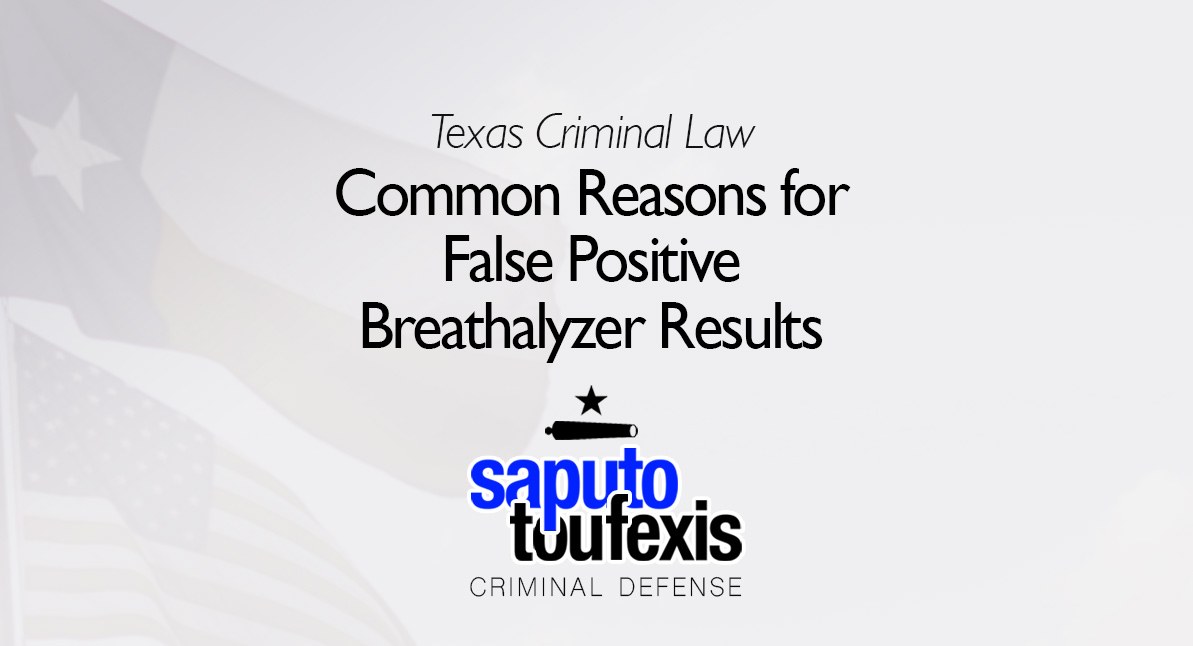When a Texas driver is stopped by law enforcement under the suspicion of drunk driving, they’re asked to take a breathalyzer test. This breath test is used to confirm whether a person’s blood alcohol content (BAC) is at or above the legal limit of .08. Any driver with a BAC at or above the legal limit is considered legally drunk. If breathalyzer results indicate that a driver is over the legal limit, the driver is placed under arrest and taken to the police station with the assumption they are guilty of the crime.
Suppose you find yourself in this situation and are accused of driving drunk. In that case, it is vital that you contact an attorney as soon as possible to learn the best way to resolve the situation and uncover whether the breathalyzer showed a false positive.
What Factors May Produce a False Positive on a Breathalyzer Test?
Various reports have pointed to the fallacy of breathalyzers, and many experts have demonstrated how easily various factors can produce a false positive. Even when breathalyzers are used and maintained correctly, there remains a scope of error that must be considered in the readings.
It’s not uncommon for police officers to receive little training in administering a breath test correctly, and several other factors relating to medication, health, and nutrition can alter the results. Some individuals may have consumed alcohol hours before they were pulled over, and, despite the alcohol being dissolved from their bloodstream, the breathalyzer can pick up remnants of alcohol in their mouths. If you hire an attorney to represent you in a DUI case in Texas, you must inform them of any of these circumstances. Consider the reasons below why a breathalyzer may result in a false positive:
The Breathalyzer Has Not Been Appropriately Calibrated
Breathalyzers must be maintained following specific guidelines to ensure they stay fully functional and calibrated. Because the settings are so particular, technicians are often needed to support these sensitive devices. When breathalyzers are not set at the correct settings, the resulting breath test readings are often inaccurate.
To prove that a breathalyzer may be faulty or producing inaccurate readings, it must have been seen that the device had been used over 150 times or had gone more than ten days without a recalibration. Proving this will cast doubt on the accuracy of the breath test results.
Medical Conditions
Medical conditions and the medication prescribed to manage them can alter the results of a breath test. These conditions can raise BAC levels and produce a false positive in a breathalyzer reading because of the acid present in the stomach or esophagus. These conditions include:
● Acid reflux
● Gastrointestinal reflux disease
● Continual or temporary heartburn
A false positive can also result when short breaths are given during the testing, rather than a deep breath.
Environmental Factors
Various environmental factors can produce a false positive in a breathalyzer test. These factors include alcohol found in everyday items like cleaning supplies and paint. The liquor from the reading of the previous person the breathalyzer tested can also result in a false positive.
Administering the Breathalyzer Test Too Soon
Alcohol remnants in the mouth may change the readings of a breathalyzer to a much higher rate than the person’s actual BAC. Law enforcement is required to wait at least 15 minutes after seeing a person drink, burp, vomit, or ingest alcohol in any form before administering a breath test.
This time requirement ensures that the breathalyzer does not read alcohol that remains in the mouth, causing a false positive. Waiting 15 minutes ensures that the reading only picks up the alcohol measurable in a deep breath and produces the driver’s correct BAC level.
Blood Alcohol Rate Rising with Time
It often takes a person one to three hours to fully absorb alcohol into their system. That means if a person is driving within one to three hours of having a drink, their BAC levels are on the rise, and any breathalyzer test given during this time will read an inaccurate depiction of what may be happening within the driver’s body.
While driving, a person’s BAC levels may surge beyond a particular point and then drop again. If the breathalyzer test is administered during the rising period, it reads a false positive. It cannot demonstrate that the driver was actually intoxicated while driving, even though it seems that they were.
Contact the Saputo Toufexis | Criminal Defense for Full-Service DUI Defense in Dallas
If you’re facing a DUI charge in Texas, it is essential to contact a trusted attorney with DUI defense experience as soon as possible. At the Saputo Toufexis | Criminal Defense, we go to extraordinary lengths to defend you and challenge the evidence and tests found against you. Our mantra at the Saputo Toufexis | Criminal Defense is simple: JUST WIN.
Our legal team handles every aspect of your case, from fighting the initial license suspension to trial. With cutting-edge forensic technology and innovative defense strategies, you can be confident in our ability to defend you against the state and protect your legal rights.
If you’re ready to discuss legal representation, schedule an immediate consultation with our seasoned DUI defense attorney, or else you can apply for a free consultation.







